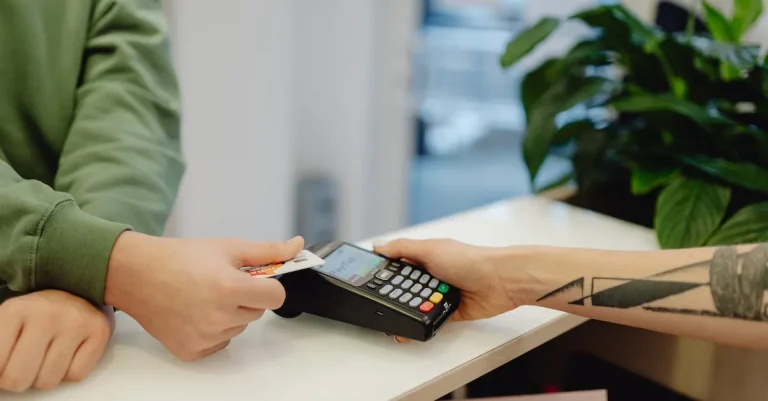How Much Is A Roman Coin Worth? An In-Depth Look At Evaluating And Pricing Ancient Coins
If you’ve stumbled across an old Roman coin, you may be wondering – how much is this actually worth?
Valuing ancient artifacts can be tricky, but this comprehensive guide will walk you through everything you need to know to assess the value of a Roman coin.
If you’re short on time, here’s a quick answer to your question: Roman coins can be worth anywhere from less than $50 for common coins in poor condition to over $100,000 for the rarest coins in pristine condition.
The exact value depends on age, rarity, condition, and demand.
Learn the History and Significance of Ancient Roman Coins
Ancient Roman coins hold a significant place in the history of numismatics and are highly sought after by collectors and enthusiasts alike.
These coins provide valuable insights into the political, economic, and cultural aspects of ancient Rome. Understanding the history and significance of these coins can help in evaluating and pricing them accurately.
Let’s delve into the fascinating world of ancient Roman coins.
Brief history of Roman coinage
The history of Roman coinage dates back to the 4th century BCE when Rome was still a republic.
Initially, Roman coins were heavily influenced by Greek coinage, but over time, they developed their own distinctive designs and features.
The Roman Empire saw the introduction of various denominations, including gold aureus, silver denarius, and bronze sestertius.
The coinage system underwent several reforms and transformations, reflecting the changing political and economic landscape of the empire.
Iconography and designs
Ancient Roman coins are known for their intricate designs and rich symbolism.
The obverse side of the coins typically featured the portrait of the ruling emperor or empress, showcasing their authority and power.
The reverse side depicted a wide range of subjects, such as mythological figures, deities, Roman landmarks, military victories, and important historical events.
These designs not only served as propaganda but also provided a visual representation of the values and achievements of the Roman Empire.
Minting and metals
The minting of Roman coins was a highly regulated process conducted by skilled artisans. The empire had several mints located across different regions, each producing coins with its own mint mark.
The choice of metals used in coinage varied over time. Initially, Roman coins were made of bronze, but silver and gold became more prevalent during the imperial period.
The quality of the metal used, as well as the condition and rarity of the coin, greatly influence its value in the market.
Coins as historical artifacts
Ancient Roman coins are not just monetary objects; they are also valuable historical artifacts.
These coins provide a tangible link to the past, allowing us to study and understand various aspects of Roman history, such as political figures, economic policies, and cultural influences.
The inscriptions and images on the coins serve as primary sources for historians and archaeologists, shedding light on the events and individuals that shaped the Roman Empire.
As such, collecting and studying ancient Roman coins is not only a hobby but also a way of preserving and appreciating our shared heritage.
Evaluate Condition and Authenticity
When determining the value of a Roman coin, it is crucial to carefully evaluate its condition and authenticity. These factors play a significant role in determining its worth in the market.
Examining wear, damage, and preservation
One of the first steps in evaluating a Roman coin is to examine its wear, damage, and preservation.
Coins that are in better condition and exhibit less wear and tear are generally considered more valuable. This is because they provide a clearer and more detailed image of the coin’s original design.
On the other hand, coins that have significant damage or corrosion may have a lower value.
There are several things to look for when examining the condition of a Roman coin. Check for any scratches, dents, or signs of cleaning that may have altered the coin’s original surface.
Additionally, the presence of patina, a thin layer that develops over time, can be an indication of the coin’s age and authenticity.
Spotting fakes and forgeries
Unfortunately, the market for ancient coins is not immune to counterfeiters and forgers. It is essential for collectors and investors to be knowledgeable about the various methods used to create fake Roman coins.
One way to spot a fake is to examine the coin’s details closely. Authentic Roman coins often display intricate designs and fine details, while counterfeit coins may have inconsistencies or lack precision.
Additionally, researching the coin’s history and comparing it to genuine examples can help identify any discrepancies.
Importance of provenance
The provenance, or the documented history and ownership of a Roman coin, is another critical factor in determining its value.
Coins with a well-documented provenance, especially those from reputable archaeological excavations or prestigious collections, are generally more valuable.
When evaluating a Roman coin, it is essential to consider its origin and how it has been passed down through the years.
Coins with a clear and traceable lineage often fetch higher prices as they provide a sense of authenticity and historical significance.
Professional authentication services
For collectors and investors who want an expert opinion on the authenticity and value of a Roman coin, professional authentication services can be invaluable.
These services employ experienced numismatists who specialize in ancient coins and have the expertise to evaluate and appraise them accurately.
It is recommended to use reputable and well-established authentication services to ensure a reliable evaluation.
Organizations such as the Numismatic Guaranty Corporation (NGC) and the Professional Coin Grading Service (PCGS) provide professional coin grading and authentication services.
By utilizing these services, collectors can have peace of mind knowing that their Roman coins have been thoroughly examined by experts in the field, giving them a more accurate understanding of their value in the market.
Determine Date and Rarity
One of the first steps in evaluating and pricing a Roman coin is to determine its date and rarity.
This information plays a crucial role in determining the coin’s value in the market.
Key date ranges
Understanding the key date ranges for Roman coins is essential in assessing their value. Certain periods in Roman history produced coins that were more sought after by collectors.
For example, coins from the Roman Republic (c. 509-27 BC) and the Roman Empire (27 BC-AD 476) are highly desirable. Within these periods, there are specific dates that are considered key. These key dates often correspond to important historical events or significant rulers.
Most common vs. rare types
When determining the rarity of a Roman coin, it’s important to differentiate between the most common types and the rare ones.
Common coins were typically produced in larger quantities and were more readily available in the market.
On the other hand, rare types are scarce due to limited minting or survival rates. These rare coins tend to command higher prices in the collector’s market.
Uncovering mintage numbers
Researching the mintage numbers of Roman coins can provide valuable insights into their rarity and value. Mintage refers to the number of coins produced during a specific period.
Unfortunately, accurate mintage records for ancient coins are often incomplete or non-existent.
However, historians and numismatists gather information from various sources, including archaeological finds and historical accounts, to estimate the potential mintage numbers for different coin types.
One-year types
One-year types are Roman coins that were minted for only a single year. These coins are often highly sought after by collectors due to their limited production and unique designs.
Examples of one-year types include commemorative coins issued to celebrate specific events or rulers. The rarity and historical significance of these coins contribute to their higher value in the market.
For more information on Roman coins and their value, you can visit reputable numismatic websites such as NGC or PCGS.
These websites provide comprehensive resources and pricing guides that can help you further evaluate and price your Roman coins.
Understand Grading Scales
Numismatic grading systems
When it comes to evaluating the worth of a Roman coin, understanding grading scales is crucial. Numismatic grading systems are used to assess the condition and quality of ancient coins.
One of the most widely recognized grading systems is the Sheldon Scale, which was originally developed for American coins but is also applied to ancient coins.
Another popular grading system is the International Scale, which was created by the International Numismatic Society.
Distinguishing grades
Grading scales typically consist of a range of grades that reflect the condition of a coin.
These grades can range from Poor (P) to Perfect Uncirculated (PRU) or Mint State (MS). Each grade represents a different level of wear, damage, and preservation.
For example, a coin graded as Poor may have heavy wear and be difficult to identify, while a coin graded as Mint State will have no wear and appear as if it just left the mint.
Within each grade, there may be additional sub-grades or qualifiers to further differentiate the condition of the coin. These sub-grades can include details such as the amount of wear, the presence of any scratches or dents, or the overall appearance of the coin’s design.
Impact on value
The grade of a Roman coin has a significant impact on its value. Coins in higher grades, such as Mint State or Extremely Fine (EF), are generally more desirable among collectors and investors.
These coins are often in better condition and have more detail, making them more visually appealing.
On the other hand, coins in lower grades, such as Poor or Fair, may have significant wear and damage, which can diminish their value.
However, even coins in lower grades can still hold historical and cultural significance, making them valuable to certain collectors or museums.
It’s important to note that the value of a Roman coin is not solely determined by its grade. Factors such as rarity, historical significance, and demand also play a role in determining the worth of a coin.
Therefore, it’s essential to consider these factors in conjunction with the grade when evaluating the value of a Roman coin.
To learn more about grading scales and how they impact the value of ancient coins, you can visit reputable numismatic websites such as NGC Coin Grading or PCGS Coin Grading.
Study Current Market Values
When it comes to determining the worth of a Roman coin, it is essential to study the current market values.
This will give you a better understanding of how much these ancient coins are being sold for in today’s market. By keeping track of the prices, you can make more informed decisions when buying or selling Roman coins.
Checking dealer and auction prices
One way to study the current market values of Roman coins is by checking the prices set by reputable dealers and auction houses.
Dealers who specialize in ancient coins often have a good grasp of the market and can provide you with valuable insights into the value of specific coins.
Additionally, regularly monitoring auction prices can give you a sense of the demand and rarity of certain coins.
It’s important to note that prices can vary widely depending on factors such as the rarity, historical significance, and condition of the coin.
Therefore, it’s crucial to compare prices from multiple sources to get a more accurate picture of the market value.
High demand and special collectors
Another factor that can affect the market value of Roman coins is the demand from collectors. Some coins may be highly sought after due to their historical significance or rarity, which can drive up their prices.
Additionally, collectors who specialize in a particular era or emperor may be willing to pay a premium for coins that align with their specific interests.
To stay up-to-date with the latest trends and demands in the collector community, consider joining online forums, attending numismatic events, or subscribing to newsletters dedicated to ancient coins.
These resources can provide valuable insights into the market and help you gauge the potential value of your Roman coins.
Impact of condition on price
The condition of a Roman coin plays a significant role in determining its value. Coins in pristine condition, with minimal wear and clear details, are generally more valuable than those that are heavily worn or damaged.
Collectors and investors often prioritize coins in better condition, as they are more visually appealing and hold their value better over time.
When evaluating the condition of a Roman coin, numismatic grading scales such as the Sheldon scale or the numerical grading system can be used.
These grading systems assign a grade based on factors like wear, luster, and overall appearance. Understanding these grading systems can help you assess the condition of a coin and determine its potential value.
Investment potential
In addition to understanding the current market values of Roman coins, it’s also important to consider their investment potential.
Ancient coins have been known to appreciate in value over time, making them attractive to investors. However, it’s crucial to approach coin collecting as a long-term investment and do thorough research before making any purchases.
Historical trends and the overall state of the coin market can provide insights into the investment potential of Roman coins. It’s also worth considering the rarity and historical significance of the coins you’re interested in, as these factors can contribute to their long-term value.
Keep in mind that investing in Roman coins, like any investment, carries risks. Prices can fluctuate, and it’s important to have a diversified portfolio to mitigate potential losses.
Consulting with experts and staying informed about the market trends can help you make informed decisions and maximize your investment potential.
Conclusion
With a bit of research and a trained eye, you can determine if that old Roman coin you found is a common type worth a few bucks or a rare treasure worth thousands.
Learning more about the history, minting, rarity, condition, and market for ancient coins opens up a fascinating world of collecting.
Whether you plan to sell your coin, donate it to a museum, or keep it as a cherished artifact, educating yourself is key to appreciating the true value of this tangible piece of history.









